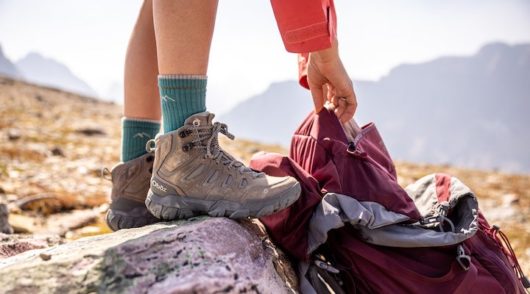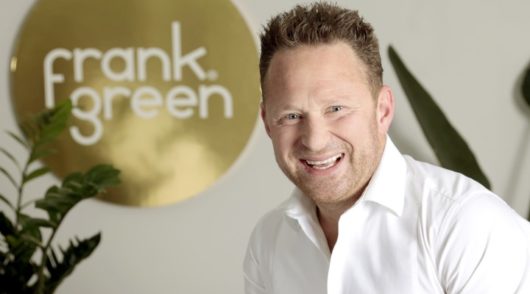Once again, tariffs dominated the conversation between analysts and Costco’s leadership when the company reported its fiscal 2025 results on September 24. Even so, there was a lighter side, and that had to do with prices as well. That’s because, of all retail anniversaries, Costco can claim one of the most unique: it’s been 40 years since it introduced its US$1.50 hot dog and soda combo, and the price hasn’t changed to this day. If it had kept up with inflation, it would now cost about
out US$4.50.
It certainly isn’t profitable in its own right, but it’s a great loss-leader and marketing gimmick. Another anniversary was reached this year, too: the 30th birthday of Costco’s private-label Kirkland Signature, which has been a fantastic growth driver of sales and price leadership.
Otherwise, it was just another routine 12 months of growth for Costco, which wrapped up its fiscal year on August 31. The company maintains its ranking as the third-largest retailer on the planet (if you discard the fact that it has the word ‘wholesale’ in the company name and sells to retailers as well as consumers). Only fellow US giants Walmart (US$675 billion in sales in 2024) and Amazon (US$638 billion) both stay ahead of it in sales volume, by a good way.
Still, for its FY25, the company racked up revenues of US$275.2 billion, up 8.2 per cent from 2024. The revenues consisted of US$269.9 billion in sales (also up 8.2 per cent), and membership revenues of US$5.3 billion (up 10.3 per cent). Costco ended the year with 81 million paid members worldwide, nine out of 10 of whom will renew their membership next time it comes due if the current renewal rate holds. Recall also that membership fees rose last September, so the beneficial impact of that is diffusing through the member income.
Adjusted for fluctuations in gasoline prices and foreign exchange rates, total company same-store sales increased by 7.6 per cent, with the strong trend continuing in the fourth quarter. The US and Canada clubs experienced same-store sales growth of 6.2 per cent and 5.2 per cent, respectively. International (excluding Canada) was up 4.8 per cent, and e-commerce grew by 15.6 per cent. In the e-commerce segment, the leading categories included gold/jewellery, housewares, tyres, apparel, sporting goods, small electrics and garden/patio items.
After-tax profit for the year was US$8.1 billion, an increase of 10 per cent. In this year of tariffs, both sales and revenues stayed ahead of merchandise costs (so gross margin percentage moved up a little), thanks largely to increasing private-label penetration and the company’s strategy of shifting the sourcing of items closer to where they are actually sold. In addition, Costco extended shopping hours for its executive members, a move that CEO Ron Vachris estimates has increased sales by an incremental 1 per cent, as opposed to just shifting the timing of purchase. However, the extended hours have been in place for only a few months, and the company will need to have more data to see how that one plays out.
All the additional new perks for executive members are, the CEO explained, resulting in a “meaningful increase in upgrades of Gold Star members to executive membership”. As it stands, executive members account for just under three-quarters of Costco’s sales.
Sales growth across most markets is being driven by both higher foot traffic and higher average transaction value, with about two-thirds attributable to traffic.
One thousand clubs on the horizon
Over the course of the year, Costco opened 24 net new warehouses, bringing its total to 914 member warehouses. Of these, 629 are located in the US, 110 in Canada, and 175 are situated outside the US and Canada, including 78 in four Asian countries: Japan, Korea, Taiwan, and China. Over the coming year, it plans to open 35 new warehouses, of which five will be relocations of existing ones. The company sees further opportunities for expansion both domestically and overseas, but it isn’t tied to a particular pace of growth over time. Still, at the current rate, 1000 clubs might not be more than two or three years away.
Tariffs are affecting assortments: garden sheds in, Christmas decorations out.
Inflation in Costco’s assortment is running in the low to mid-single digits, management reports. With the holiday season in sight, CEO Vachris conceded that the company had needed to evaluate its seasonal offerings, winnowing out items like Christmas trees and trim, and toys whose prices and/or margins would be adversely affected by the tariff environment.
However, he added that this had provided an opportunity to bring in other, high-ticket, merchandise for which there had previously been insufficient space but which were highly relevant to the season, such as garden sheds and home saunas. “I feel really good about the way the buyers have pivoted on the discretionary items,” he told analysts on the September 24 earnings call.
Costco’s buyers demonstrate Economics 101
Investors remain cautious about the impact of tariffs, and management’s comments on the subject reveal what economists refer to as substitution effects, as they primarily involve substituting products whose prices are rising relatively quickly for those whose prices are not. This is a particularly important concept and critical during periods of external price shocks in specific sectors (for example, supply-chain disruptions during and after Covid, and now tariffs). It is unfortunately common for the general public and media to perceive announced inflation numbers as suspiciously low when they see prices rising sharply for particular goods.
What they don’t realise is that inflation metrics, such as the CPI, take into account the fact that consumers respond to price changes by adjusting their purchasing behaviour, an opportunity that retailers like Costco afford them by substituting goods in and out of their merchandise mix. In other words, the ‘basket’ of goods being measured is not static – it is changing dynamically. The point is, price growth is measured in terms of the basket of goods that are actually sold today, not what was sold a year ago.
If that were not the case, inflation would be through the roof.







